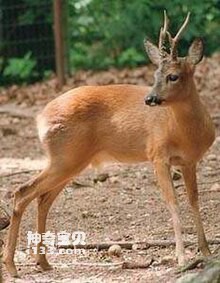rayscale: ; --tw-hue-rotate: ; --tw-invert: ; --tw-saturate: ; --tw-sepia: ; --tw-drop-shadow: ; --tw-backdrop-blur: ; --tw-backdrop-brightness: ; --tw-backdrop-contrast: ; --tw-backdrop-grayscale: ; --tw-backdrop-hue-rotate: ; --tw-backdrop-invert: ; --tw-backdrop-opacity: ; --tw-backdrop-saturate: ; --tw-backdrop-sepia: ; margin-top: 0px; margin-bottom: 1.25em; overflow-wrap: break-word; white-space: pre-wrap; color: rgb(20, 23, 24); font-family: __Karla_555e8b, __Karla_Fallback_555e8b, ui-sans-serif, system-ui, -apple-system, BlinkMacSystemFont, "segoe ui", Roboto, "helvetica neue", Arial, "noto sans", sans-serif, "apple color emoji", "segoe ui emoji", "segoe ui symbol", "noto color emoji"; letter-spacing: -0.16px; background-color: rgb(243, 245, 247);">Roe deer, also known as deer, is a wild deer animal that generally lives in natural environments such as forests, grasslands and shrubs. The following is a detailed introduction to whether roe deer can be bred artificially:
rayscale: ; --tw-hue-rotate: ; --tw-invert: ; --tw-saturate: ; --tw-sepia: ; --tw-drop-shadow: ; --tw-backdrop-blur: ; --tw-backdrop-brightness: ; --tw-backdrop-contrast: ; --tw-backdrop-grayscale: ; --tw-backdrop-hue-rotate: ; --tw-backdrop-invert: ; --tw-backdrop-opacity: ; --tw-backdrop-saturate: ; --tw-backdrop-sepia: ; margin-top: 0px; margin-bottom: 1.25em; overflow-wrap: break-word; white-space: pre-wrap; color: rgb(20, 23, 24); font-family: __Karla_555e8b, __Karla_Fallback_555e8b, ui-sans-serif, system-ui, -apple-system, BlinkMacSystemFont, "segoe ui", Roboto, "helvetica neue", Arial, "noto sans", sans-serif, "apple color emoji", "segoe ui emoji", "segoe ui symbol", "noto color emoji"; letter-spacing: -0.16px; background-color: rgb(243, 245, 247);">
Laws and regulations:
In some countries, raising roe deer may require specific licenses or compliance with relevant laws and regulations. It is necessary to ensure that farming activities are carried out within legal limits.
Space and environment:
Roe deer, as wild animals, need enough space for movement and a suitable living environment. Artificial breeding needs to provide conditions similar to their natural habitats, including forests, grasslands, etc.
Feed supply:
Roe deer have special feed needs and need to provide suitable feed, including various plants, herbs, leaves, etc. Adequate feed supply needs to be ensured.
Breeding management:
Management of breeding is an important part of artificial breeding of roe deer. It is necessary to understand the breeding habits of roe deer and carry out effective breeding management to ensure that the population can thrive healthily.
Disease prevention and control:
Roe deer are also susceptible to diseases in the breeding environment, and regular health examinations and disease prevention and control are required to ensure the health of the roe deer population.
Economic considerations:
Breeding roe deer requires certain economic investment, including site construction, feed supply, disease prevention and control, etc., and the economic benefits and feasibility need to be evaluated.
Resource protection:
Through artificial breeding, wild roe deer populations can be effectively protected and the impact on the natural environment can be reduced.
Economic Value:
The meat and fur of roe deer have certain value in the market and can be used as an economic source for breeding.
Scientific research significance:
Artificial breeding of roe deer can also provide important resources for scientific research, helping to understand animal behavior, breeding habits, etc.
Although it is theoretically possible to breed roe deer in captivity, many challenges need to be overcome, including legal and regulatory issues, space environment, feed supply, breeding management, disease prevention and control, and economic considerations. Before considering raising roe deer in captivity, it is recommended to have a thorough understanding of relevant knowledge and prepare sufficient resources.
animal tags:
We created this article in conjunction with AI technology, then made sure it was fact-checked and edited by a Animals Top editor.